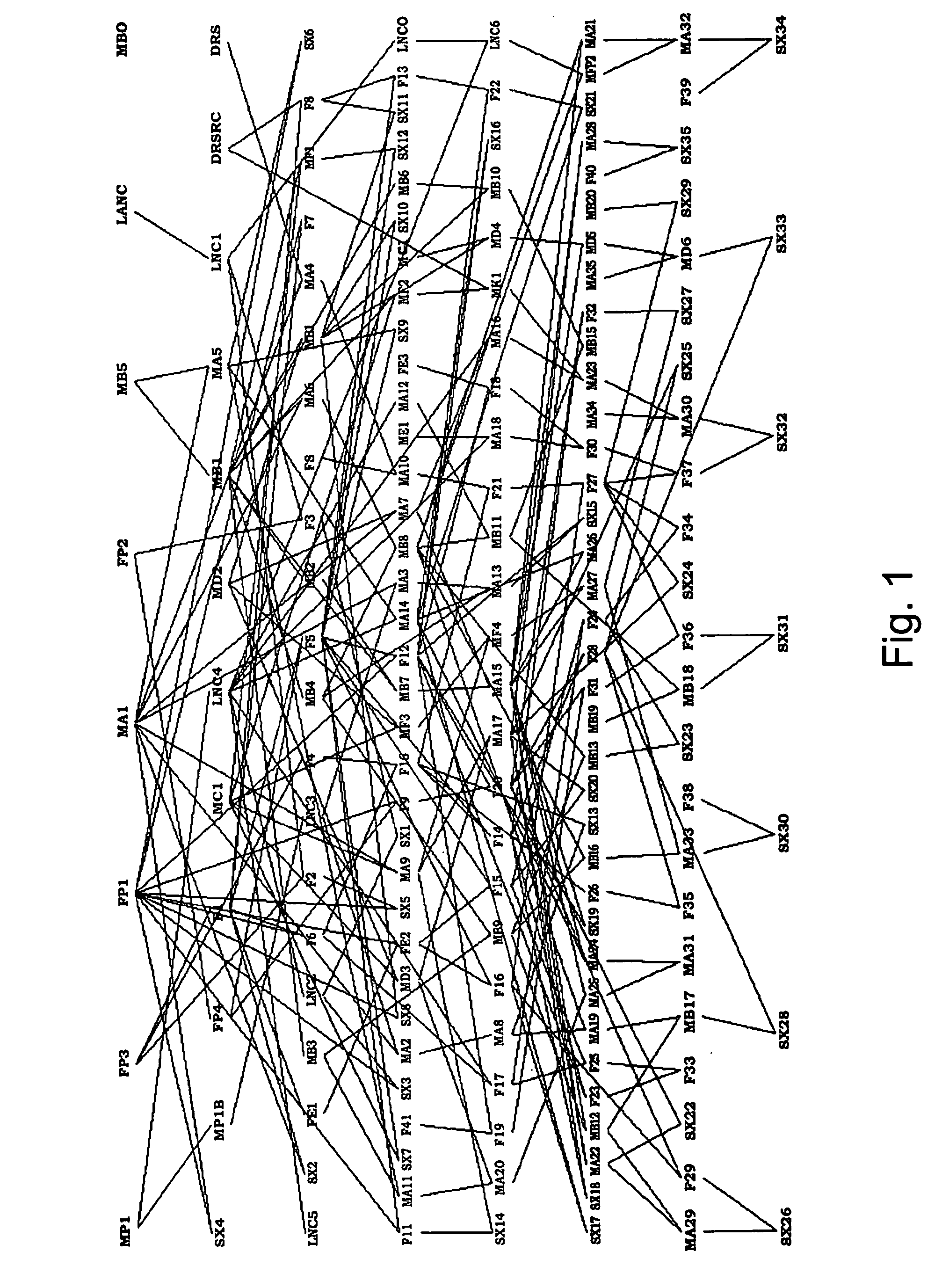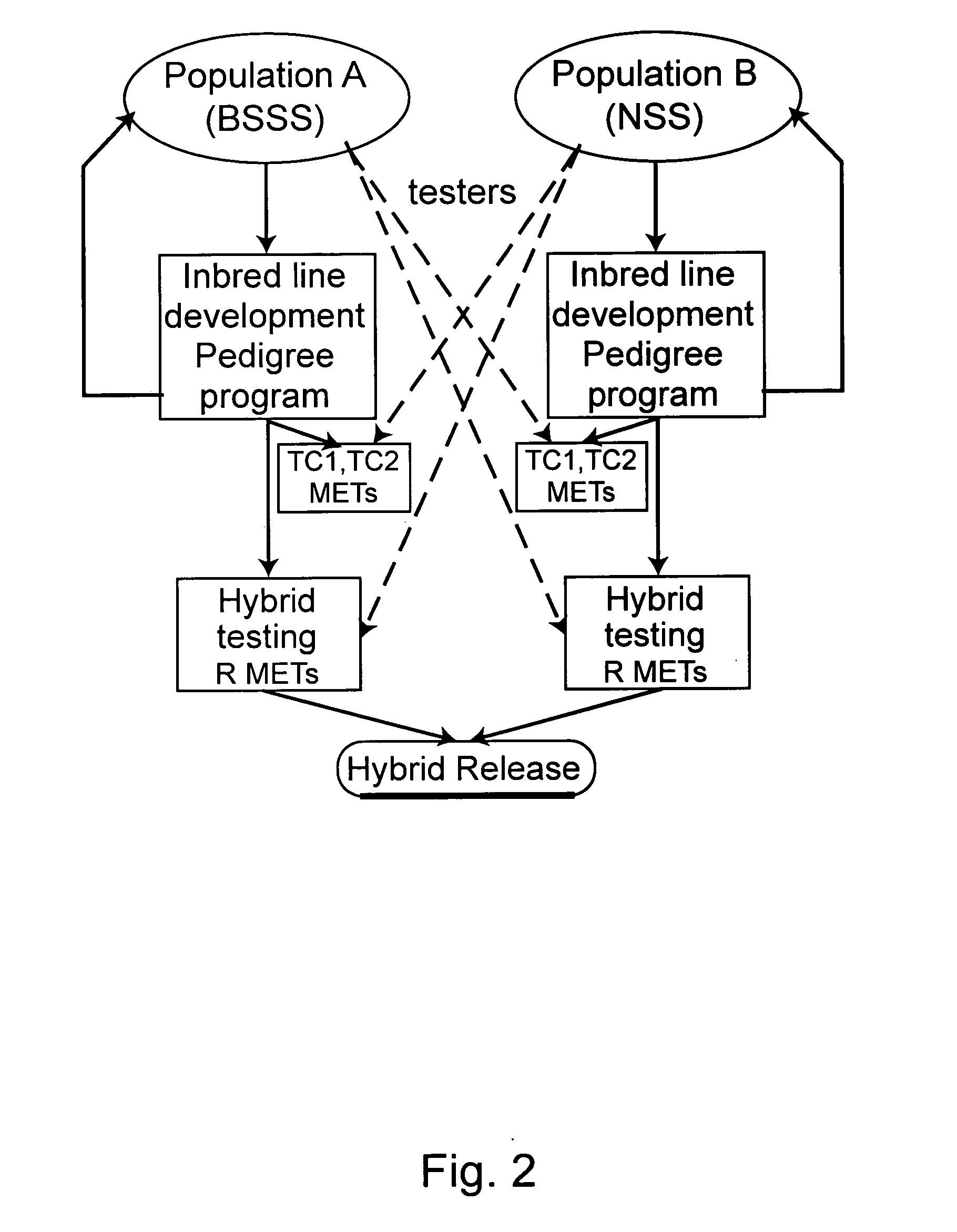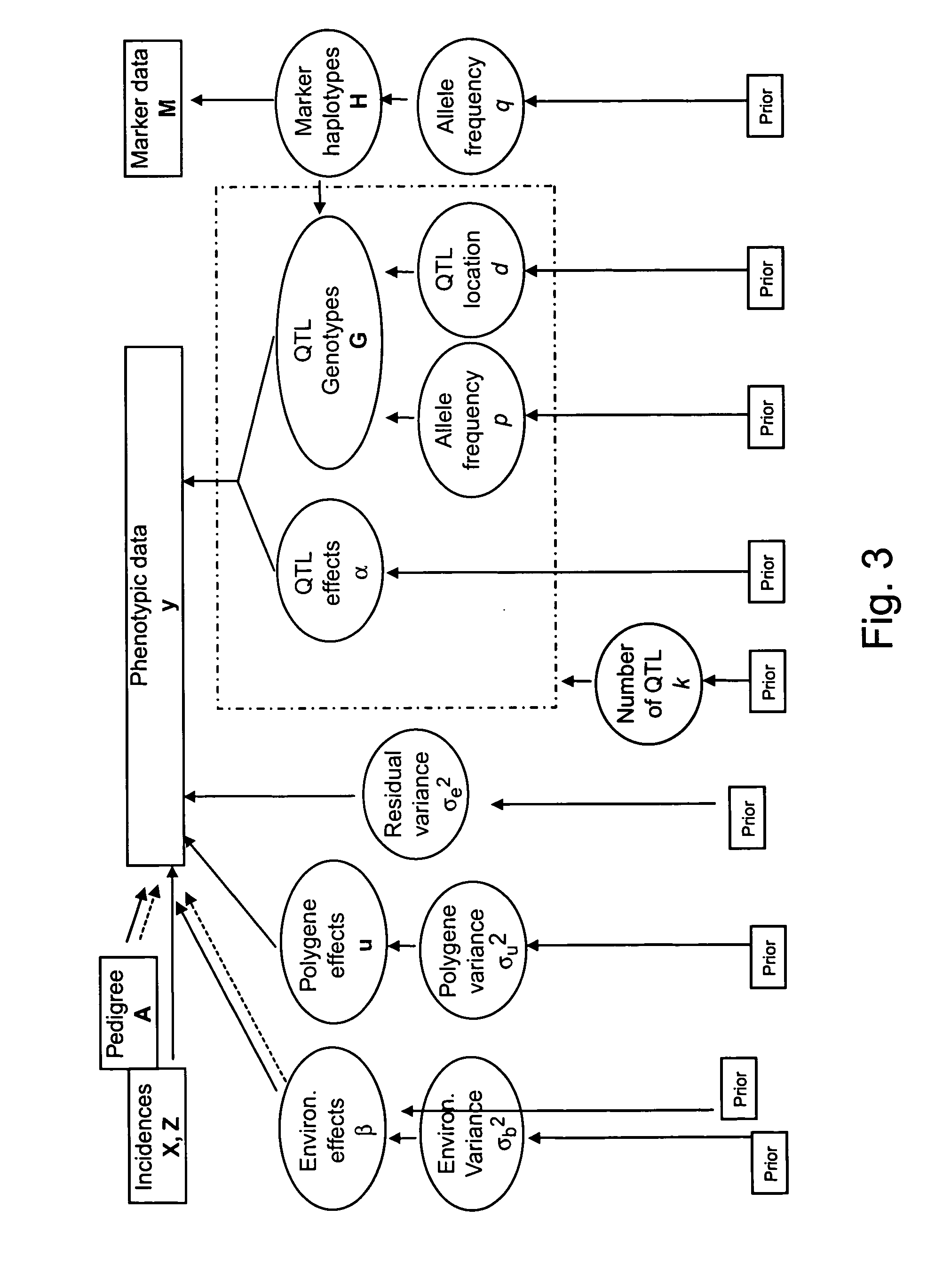Plant breeding method
a plant breeding and plant technology, applied in the field of plant breeding methods, can solve the problems of inability to accurately predict the effect of phenotypic selection, and inability to meet the needs of large-scale resources
- Summary
- Abstract
- Description
- Claims
- Application Information
AI Technical Summary
Problems solved by technology
Method used
Image
Examples
examples
[0186] The following sets forth a series of experiments that demonstrate determination and use of an association between cob color and a genetic marker haplotype in maize. It is understood that the examples and embodiments described herein are for illustrative purposes only and that various modifications or changes in light thereof will be suggested to persons skilled in the art and are to be included within the spirit and purview of this application and scope of the appended claims. Accordingly, the following examples are offered to illustrate, but not to limit, the claimed invention.
[0187] Cob color (e.g., red or white) in maize is determined in part by the pericarp color 1 (p1) gene. See, e.g., Neuffer, Coe, and Wessler (1997) Mutants of Maize, Cold Spring Harbor Laboratory Press, p 107 for a description of p1-wr, p 363 for a description of the gene and its mode of action, and p 35 for its map location. The following example describes determination of an association between cob ...
PUM
| Property | Measurement | Unit |
|---|---|---|
| lodging resistance | aaaaa | aaaaa |
| stalk lodging resistance | aaaaa | aaaaa |
| disease resistance | aaaaa | aaaaa |
Abstract
Description
Claims
Application Information
 Login to View More
Login to View More - R&D
- Intellectual Property
- Life Sciences
- Materials
- Tech Scout
- Unparalleled Data Quality
- Higher Quality Content
- 60% Fewer Hallucinations
Browse by: Latest US Patents, China's latest patents, Technical Efficacy Thesaurus, Application Domain, Technology Topic, Popular Technical Reports.
© 2025 PatSnap. All rights reserved.Legal|Privacy policy|Modern Slavery Act Transparency Statement|Sitemap|About US| Contact US: help@patsnap.com



